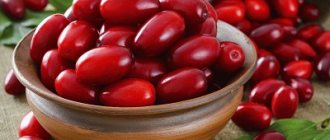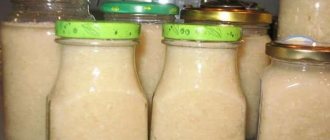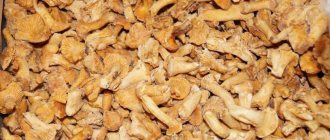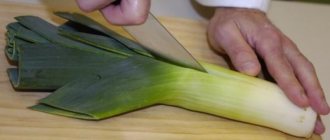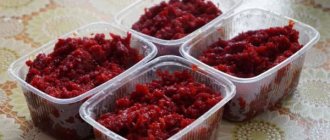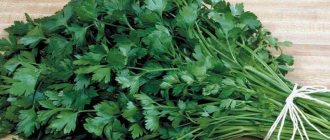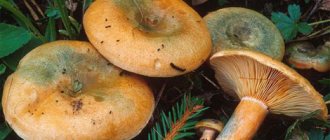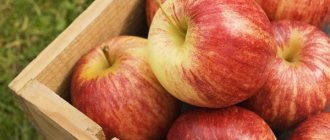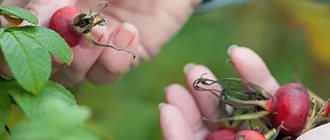Is it possible to freeze leeks for the winter?
Like most other vegetables, leeks are suitable for freezing for the winter. It will perfectly complement soups, stews and other dishes. Many recipes use only the white part, as it is soft, tender and even sweet. Many people consider green feathers tasteless, although they are also suitable for freezing.
Preparing the refrigerator and freezer before freezing
Deep-frozen food can be stored for up to 12 months, so before loading it for the winter, the freezer compartment is thoroughly washed. A dish soap or a solution of regular baking soda is suitable for this. For 0.25 liters of water, 1 tbsp is required. l. soda or gel. Rinse off the soapy water thoroughly.
A clean camera must be wiped dry and turned on no earlier than half an hour later. After another 30 minutes, the freezer is ready to load.
Important! We must not forget that onions have a very strong and specific smell. It is transferred to other products in the same compartment. Therefore, leeks are stored in containers with tight-fitting lids or in plastic bags.
The most suitable temperature is -18°C and below. If you have any doubts about the operation of the freezer, it is advisable to contact a service center. It is better to prevent a problem than to detect it already at full load.
The first month after freezing, leeks will smell strong. To prevent other products from being saturated with this smell, the vegetable is stored in a tightly sealed package and, best of all, in a separate drawer in the freezer. After a month, the smell of frozen onions becomes less pungent.
When and how to clean
Natural products are most preferable in winter, so it is best to store leeks fresh. Only varieties of medium and late ripening are suitable for this:
- They contain less moisture and more dry matter, which ensures good shelf life.
- Such plants can be stored for up to 3 months without loss of quality, and the harvest time is in September or October - which means that before the New Year you will have fresh greens on your table.
Early ripening varieties lose in this regard. They have a delicate semi-sharp taste and are very productive, but they have a short shelf life. It makes no sense to prepare such leeks fresh for the winter, but it can be frozen or dried.
Among the middle and late varieties, the following varieties can be recommended for cultivation:
These varieties have a weak bulb, which makes cleaning much easier.
Start preparing leeks for winter storage in the summer. For this:
- Gradually cover the growing onion with soil up to the first true leaf to obtain a bleached, tall stem.
- Or use a dark film, which from the second half of September carefully wrap the lower part of each plant.
By the way, the Columbus variety does not require hilling.
The most suitable moment when you can already harvest leeks comes in early or mid-October. At this time, the plants in the beds fully grow and reach ripeness.
However, in each region the harvest date will be individual.
It is important to dig up onions from the garden as late as possible, but before the onset of persistent cold weather. Frozen plants are not suitable for storage
The best weather for harvesting leeks is sunny, calm and dry. During the rainy season, this cannot be done, because in a wet state the vegetable is poorly stored and can easily rot.
Leeks should be collected very carefully so as not to damage them. First, dig up each plant with a sharp shovel or pitchfork, then grab it by the leaves and remove it from the soil, shake the soil off the roots with your hands and set it aside
Do these steps until you have collected all the shoots.
Onion preparation
Stems of any thickness are suitable for freezing for the winter. They are cleaned of damaged and limp feathers, the cut at the base is renewed or the roots are removed.
The onions are washed well under running water. Particular attention is paid to the places between the leaves where dirt and sand collect. The plant is thoroughly dried before being sent to the freezer.
Features of storage at home
Leeks can be stored in several ways, depending on where you live. If there are certain places for storage in the form of a basement or cellar, you can use them and adhere to the technology for storing this type of vegetable. If there are no specially equipped places, then you can store the harvested crop in the freezer or preserve it.
In the cellar
Vegetable growers living in private houses place leeks in dry cellars or basements. To preserve the vegetable until mid-spring, it would be appropriate to place it in clean and dry boxes. The main thing here is to observe the storage temperature and it should not exceed the desired temperature and humidity parameters.
The air should be kept at a temperature range from 0 to +4 C, and humidity should not exceed 85%. To be sure that leeks will last all winter and last until spring, it is better to choose a late-ripening variety of vegetable. If you want to keep the leeks in their original form as soon as they come from the garden, you can use boxes with sand poured into them.
First, place film or foil on the bottom of the box, pour about seven centimeters of clean sand, it is advisable to calcinate it and cool it. Then place the leek vertically on the sand with a slight slope and sprinkle ten centimeters of sand on top, you can moisten it a little. To prevent rot from forming with this storage method, you can sprinkle ash on top of the vegetable.
But no matter how well the place for winter storage of leeks is provided, periodically during the winter months it is necessary to sort through it and, at the first signs of spoilage, pull it out of the storage place so that it can be used first for its intended purpose.
In a refrigerator
When the leek harvest is small, you can store it in the refrigerator or freezer. In the refrigerator, leeks are stored on the lowest shelf or in a drawer intended for vegetables. Before sending it for storage, it must be processed by cutting the leaves into two-thirds and wrapping the bundles with film.
It is imperative to inspect the onions if they are stored for a long time, so that the packaging film and tops are dry. You can make small holes in the bags so that the onions can breathe and the moisture evaporates on its own.
In the freezer
To store leeks in the freezer until the next harvest, you need to thoroughly wash them, dry them and cut them into pieces that you will need for preparing the dish. Can be placed in special containers or bags and frozen.
When you need to use leeks, pull a portion out of the freezer and do not wash it, but place it directly where you need it. This method allows you to preserve all the beneficial properties of the vegetable. The only drawback to this method is that you cannot freeze much if the freezer is small.
Drying method
Leeks can be prepared for the winter and in the form of a dry seasoning. To do this, you need to peel it, wash it thoroughly, cut it into thin rings, pour it onto a baking sheet and put it in a preheated oven or microwave.
You can also use an electric dryer. Drying should be no more than two hours at a low temperature. After this method of preparation, leeks retain all their beneficial vitamins. During the warm season, you can dry onion rings outside under the shade to avoid direct sunlight; such drying will take three days.
Pickling method
Leeks can be salted or preserved so that you can enjoy the preparation in winter. First you need to prepare the marinade. To do this, take water, lemon juice, salt, vinegar and spices. We first peel the onion, wash it and cut it into rings. Place in prepared sterile jars and fill with boiling marinade.
Screw on the lids and let the jars cool. After this, store it in a cool place where you can take it all winter and enjoy the taste of pickled leeks. It can be added to various dishes or as a seasoning in food.
On the balcony or loggia
If the above storage methods are not suitable and you do not have another place to store leeks like a balcony or loggia, you can use them. To do this, we clean the vegetable from dirt and bad leaves, without resorting to the wet method, dry it and put it in even layers in a box, tightly wrapping it in a warm blanket. This way, the leeks will retain their natural moisture and will not freeze in the event of sub-zero temperatures.
You can also use the basement storage method where the box is filled with sand and the leeks stand in it on the floor at an angle. Only in this case it is necessary to insulate the box with sand in order to maintain a constant temperature.
Methods for freezing leeks
Greens can be frozen both chopped and whole. It is thoroughly washed, dried, sorted and stored in a bag or container with a tight lid in the freezer.
There are several rules and recommendations for freezing leeks.
To preserve their green color, nutrients, and flavor, blanch the greens briefly in boiling water—one minute at most. But you can do without it. After blanching, the leeks are dried and packaged in an airtight container.
Defrost exactly as much onion as will be used at a time. The remaining portions should not be exposed to warm air - the onions cannot be re-frozen, they will turn into useless porridge.
Important! Leeks contain folic acid, which is very beneficial for pregnant women. Its greatest concentration is in the white part.
Overall
How to freeze whole leeks? After washing and drying, the stems and feathers are first placed in the refrigerator on a plate covered with film or a bag for about two hours.
After two hours, the stems are ready for packaging. Excess air is released from the bags and tied tightly. To avoid having to open the bag every time for a couple of stems, it is recommended to freeze leeks in portions.
In crushed
After initial preparation, the stems are cut in the way they are planned to be used for cooking . For example, for stew or soup, onions are cut into circles. If the stem is too thick, it is usually divided in half lengthwise and cut into half rings. Often many recipes only call for the white part and the beginning of the green part.
Then the leek is frozen on some flat surface. To do this, use a large bowl, tray, baking sheet, cutting board, etc. Some freezers have a flat drawer. Cover the surface with cling film and place chopped onions on it.
The circles are distributed in a thin layer and covered with a plastic bag or cling film. This will reduce the spread of odor. In this form, the leek needs to stay in the freezer for about four hours. It is advisable that the temperature is no higher than -18°C. During this time, the onion freezes slightly, after which it is poured into a container or bag.
Important! Frozen onions should easily separate from the tray and be crumbly.
After packaging, remove as much air as possible from the bags. It is recommended to pack one serving in several bags to reduce the spread of odor.
Useful composition and possible harm
This type of onion is a storehouse of useful vitamins and minerals that increase human immunity, as well as an excellent means of promoting weight loss. So, the main vitamins it contains are:
- B1 (thiamine) - normalizes the functioning of the cardiovascular, nervous and digestive systems, stimulates brain activity;
- B2 (riboflavin) - converts fats and carbohydrates into energy, strengthens the immune system, increases hemoglobin;
- B9 (folic acid) - improves memory, slows down aging, prevents the formation of blood clots;
- C (ascorbic acid) - improves immunity, improves metabolism, strengthens blood vessels;
- E (tocopherol) - normalizes blood circulation, restores damaged tissue, stabilizes hormonal levels, rejuvenates cells;
- PP (nicotinic acid) - dilates blood vessels, stimulates the gastrointestinal tract, promotes the removal of toxins, and reduces blood sugar levels.
The presence of the listed vitamins in the body will help to resist seasonal diseases or cope with an existing disease, as well as simply strengthen the immune system, normalize the functioning of internal organs, and improve the condition of nails, hair and skin.
As for the beneficial minerals that this variety of the Onion family contains, we can highlight potassium, magnesium, iron, phosphorus, sodium and calcium.
The presence of these minerals has a beneficial effect on the stable functioning of the body, improving metabolism, strengthening the bone system and overall well-being.
In addition, the existing diuretic and choleretic effects stimulate cleansing of the body.
And thanks to its low calorie content (only 34 kcal per 100 grams!), this miracle vegetable becomes an excellent assistant for those who want to lose weight; in combination with physical activity, it also helps speed up metabolism and reduce hunger.
Thus, having in its arsenal a huge list of useful substances, this type of onion is often used to prevent or treat anemia, arthritis, colds, atherosclerosis, nervous tension, diseases of the gastrointestinal tract, as well as other common diseases.
Consumption restrictions
Although leeks contain an abundance of beneficial qualities, they should not be overused.
In addition, you should pay attention that when boiled, stewed, or fried, onions have the most gentle effect on all body systems, but eating the vegetable raw has some limitations
So, onions are not recommended for eating raw:
- For nursing mothers - mother's milk acquires an unpleasant odor, which is why children may refuse it;
- People suffering from diseases of the gastrointestinal tract and duodenum;
- People who are allergic to nickel.
How to defrost onions correctly
This product is often used when preparing hot dishes. In this case, the onions are not defrosted, but immediately thrown into a saucepan or frying pan. But sometimes you just need defrosted greens.
Defrosting is carried out in several ways:
- at room temperature;
- in cold water;
- in the refrigerator compartment;
- in the microwave in defrost mode.
It is not recommended to use the latter method, since heat treatment (albeit mild) removes some of the beneficial properties of any vegetable.
The defrosted workpiece is used for preparing soups, omelettes, pie filling, cutlets, casseroles, etc. If the onion was frozen in the form of a puree, pureed in a blender, it will make an excellent spread for sandwiches.
Important! After freezing, leeks lose their crunchy texture and are therefore not suitable for salads.
Wintering leeks at home
Storing bulbs in the apartment
At room temperature, greens stay fresh for one week. To do this, 5–10 stems with feathers are folded into a bunch and wrapped in perforated plastic film.
IN THE PHOTO: When storing leeks in bags, it is important not to forget to cut the ventilation holes
Leeks in the refrigerator
If the refrigerator has an intermediate chamber that maintains a temperature of -1 to -3°C, green onions will remain in excellent condition for two months.
For long-term storage of leeks, partial processing of the crop using one of the methods described below is necessary.
Drying
A cylindrical leek bulb is being dried. It is cleaned, cut into thick rings, separated one ring at a time and transferred to a sieve. Dry for four hours, maintaining a temperature of +60°C. Dried rings are stored in a tightly sealed container. It is convenient to use glass jars with plastic lids.
IN THE PHOTO: This is what leeks look like after drying.
Green feathers can also be dried. They are then ground in a blender and used as a seasoning for soups and vegetable stews.
Salting
Green onion feathers are salted as follows:
- Cut the feathers into pieces of 2–3 cm.
- Place tightly in an enamel pan.
- Sprinkle with salt: per 1 kg. green onions take 50–70 g of salt.
- Add bay leaves and allspice peas.
- Leave under pressure for 2-3 weeks.
- Transfer to jars, cover with plastic lids and transfer to a cool place for storage.
Freezing
Leeks do not lose their taste when frozen. Before freezing, the leaves and stems are washed, dried on a towel, cut into pieces, placed in freezer bags in a layer no thicker than 5 cm and placed in the freezer. IN THE PHOTO: It is better to freeze leeks in portions, in small batches.
Storing leeks at home or in the cellar does not require much effort from the gardener. With a little effort, you can pamper yourself and your family with fresh, healthy greens all year round.
Subscribe to new articles in the Garden section and receive updates by email. Expert articles on gardening care are understandable and accessible to everyone!
